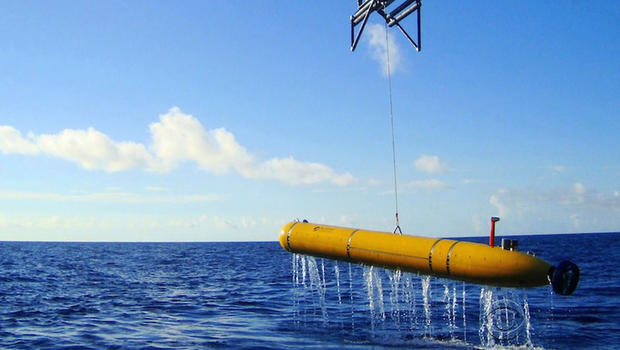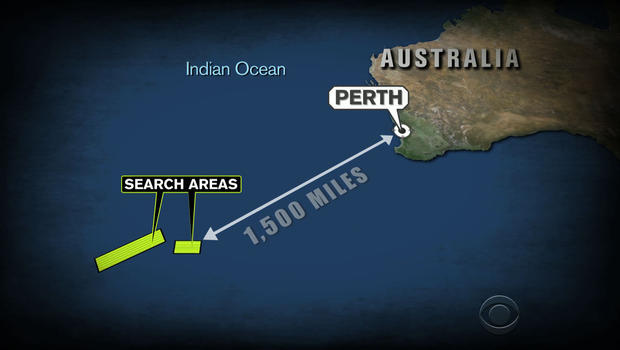Sophisticated equipment en route to search for Flight 370's black boxes
As the search resumed Wednesday for wreckage from Malaysia Airlines Flight 370, the U.S. Navy is dispatching a piece of equipment called a pinger locator to try to find the black boxes from the doomed jetliner, which is believed to have crashed into the depths of the southern Indian Ocean.
But the pinger locator can't be operational on site until April 15 - just three days before the batteries on the flight data recorders could run out.
Phoenix International, a privately owned freight forwarding company, is sending sophisticated equipment to try to located the so-called black boxes."This is a small towed vehicle and it was designed specifically to detect the acoustic beacons that are attached to the flight data recorders from commercial airliners," said Curt Newport, a search and recovery specialist for Phoenix.
It's designed to locate the pinger attached to the black box.
"The way it works is when this is immersed in water, fresh water or salt water, it puts out a chirper sound at a very specific frequency at one pulse per second," Newport said.
But a pinger only emits a signal for 30 to 40 days, so Phoenix is also sending an Autonomous Underwater Vehicle, or AUV, which searches for debris underwater.
"This is the next step, this is called the Artemis AUV," said Paul Nelson, a project manager at Phoenix.
"It has side scan sensors on it, and cameras. So the tail cone here drives it. You put it in the water, you do your checks and it spirals down to the bottom. And then based on your pre-programming it'll run a search pattern," Nelson said.
"Think of it like mowing the lawn, up and back, up and back and it collects data for 20 hours," he said.
But if there's no precise indication of where a plane went down, the hunt can be agonizingly slow. After an Air France flight crashed in the Atlantic Ocean five years ago with 228 people aboard, it took three AUVs two years to find it.
If there is a middle of nowhere, it is the search zone in the southern Indian Ocean.
"It's one of the most hostile and remote areas in the world," said Professor Charitha Pattiaratchi, an oceanographer at the University of Western Australia.
"It's a region we call the roaring 40s, with very strong winds and big waves. The waves are 15 feet on average, or more than 30 feet when there's a storm," he said.
He's used satellite data to build a computer model that predicts where debris from the Boeing 777 may end up.
There are around two weeks' battery life left in the plane's black boxes, and it unlikely they'll ever be found, he said.
"They'll have to be extremely lucky. It would take a lot of time before they can find it," Pattiarachi said.
"Most of the wreckage will be at the sea bed," he said.
The waters where the plane went down are as deep as 20,000 - 7,000 feet deeper than where the Titanic was found.
That means the search and recovery operation will probably rely on high-tech tools such a U.S. Navy robotic submarine that uses sonar to find objects at extreme depths. One of them is due to arrive in Australia on Wednesday.
Many of the families of the 239 people on board Flight 370 are unwilling to accept Malaysian authorities' declaration that there were no survivors.
In Beijing, passengers' families marked to the Malaysian Embassy to protest what they call the mishandling of disaster investigation. They say Malaysian authorities have lied.
Two-thirds of the 227 passengers were Chinese. Three were American. The 12 flight crew members were Malaysian.


